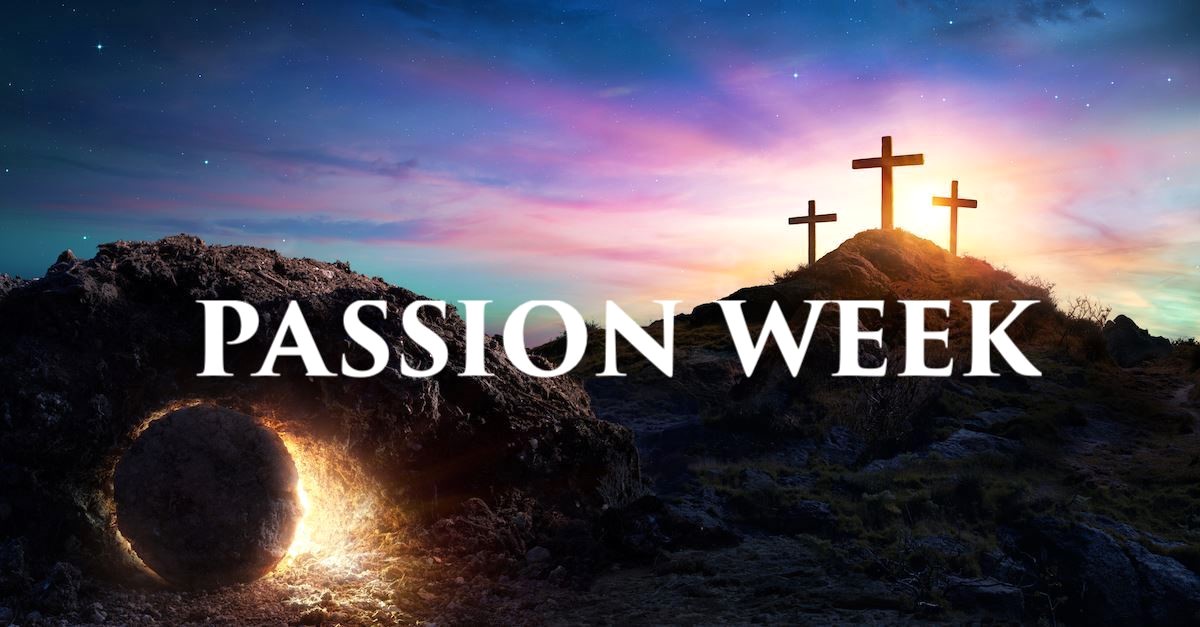
Holy Week Timeline: From Palm Sunday to the Resurrection
Day 1: Triumphal Entry in Jerusalem (Palm Sunday)
On the Sunday before his death, Jesus began his trip to Jerusalem, knowing that soon he would lay down his life for our sins. The crowds welcomed him by waving palm branches in the air and shouting, “Hosanna to the Son of David! Blessed is he who comes in the name of the Lord! Hosanna in the highest!”. When Jesus saw the city, He wept.
On Palm Sunday, Jesus and his disciples spent the night in Bethany, a town about two miles east of Jerusalem. This is where Lazarus, whom Jesus had raised from the dead, and his two sisters, Mary and Martha, lived. They were close friends of Jesus, and probably hosted Him and His disciples during their final days in Jerusalem.
Jesus’ triumphal entry is recorded in Matthew 21:1-11, Mark 11:1-11, Luke 19:28-44, and John 12:12-19.
Day 2: On Monday, Jesus Clears the Temple
The following morning, Jesus returned with his disciples to Jerusalem. Along the way, he cursed a fig tree because it had failed to bear fruit. When Jesus arrived at the Temple, he found the courts full of corrupt money changers. He began overturning their tables and clearing the Temple, saying, “The Scriptures declare, ‘My Temple will be a house of prayer,’ but you have turned it into a den of thieves” (Luke 19:46).
On Monday evening Jesus stayed in Bethany again, probably in the home of his friends, Mary, Martha, and Lazarus.
Monday’s events are recorded in Matthew 21:12–22, Mark 11:15–19, Luke 19:45-48, and John 2:13-17.
The tumultuous events of Tuesday and the Olivet Discourse are recorded in Matthew 21:23–24:51, Mark 11:20–13:37, Luke 20:1–21:36, and John 12:20–38.
Day 3: On Tuesday, Jesus Goes to the Mount of Olives
On Tuesday morning, Jesus and his disciples returned to Jerusalem. They passed the withered fig tree on their way, and Jesus spoke to his companions about the importance of faith. Later that afternoon, Jesus left the city and went with his disciples to the Mount of Olives, which sits due east of the Temple and overlooks Jerusalem. Here Jesus gave the Olivet Discourse, an elaborate prophecy about the destruction of Jerusalem and the end of the age. He speaks, as usual, in parables, using symbolic language about the end times events, including His Second Coming and the final judgment.
Scripture indicates that this Tuesday was also the day Judas Iscariot negotiated with the Sanhedrin, the rabbinical court of ancient Israel, to betray Jesus (Matthew 26:14-16).
After a tiring day of confrontation and warnings about the future, once again, Jesus and the disciples returned to Bethany to stay the night.
Thursday’s events are recorded in Matthew 26:17–75, Mark 14:12-72, Luke 22:7-62, and John 13:1-38.
Day 4: Wednesday
The Bible doesn’t say what the Lord did on the Wednesday of Passion Week. Scholars speculate that after two exhausting days in Jerusalem, Jesus and his disciples spent this day resting in Bethany in anticipation of Passover.
Day 5: Passover and Last Supper on Thursday
That evening after sunset, Jesus washed the feet of his disciples as they prepared to share in the Passover. By performing this humble act of service, Jesus demonstrated by example how believers should love one another.
During this Last Supper, Jesus established the Lord’s Supper, or Communion, instructing his followers to continually remember his sacrifice by sharing in the elements of bread and wine (Luke 22:19-20).
Later, Jesus and the disciples left the Upper Room and went to the Garden of Gethsemane, where Jesus prayed in agony to God the Father. Luke’s Gospel says that “his sweat became like great drops of blood falling down to the ground” (Luke 22:44, ESV).
Late that evening in Gethsemane, Jesus was betrayed with a kiss by Judas Iscariot and arrested by the Sanhedrin. He was taken to the home of Caiaphas, the High Priest, where the whole council had gathered to begin making their case against Jesus.
Meanwhile, in the early morning hours, as Jesus’ trial was getting underway, Peter denied knowing his Master three times before the rooster crowed.
Day 6: Trial, Crucifixion, Death, and Burial on Good Friday
Friday’s events are recorded in Matthew 27:1-62, Mark 15:1-47, Luke 22:63-23:56, and John 18:28-19:37
Day 7: Saturday in the Tomb
While his physical body lay in the tomb, Jesus Christ paid the penalty for sin by offering the perfect, spotless sacrifice. He conquered death, both spiritually and physically, securing our eternal salvation:
“For you know that God paid a ransom to save you from the empty life you inherited from your ancestors. And the ransom he paid was not mere gold or silver. He paid for you with the precious lifeblood of Christ, the sinless, spotless Lamb of God.” (1 Peter 1:18-19, NLT)
Saturday’s events are recorded in Matthew 27:62-66, Mark 16:1, Luke 23:56, and John 19:40.
Day 8: Resurrection Sunday
On the day of his resurrection, Jesus Christ made at least five appearances. Mark’s Gospel says the first person to see him was Mary Magdalene. Jesus also appeared to Peter, to the two disciples on the road to Emmaus, and later that day to all of the disciples except Thomas, while they were gathered in a house for prayer.
Sunday’s events are recorded in Matthew 28:1-13, Mark 16:1-14, Luke 24:1-49, and John 20:1-23.
